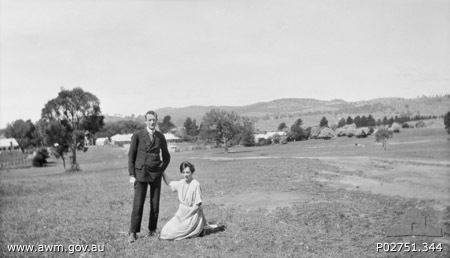Phone +61 2 6292 8888 | ||
 | ||
Address 51 Johnson Dr., Calwell ACT 2905, Australia Similar Lanyon Homestead, Alpha Hotel Canberra, Lanyon Cafe, Rose Cottage, Southside Farmers Market Profiles | ||
Track 1 tuggeranong homestead
Tuggeranong Homestead is located in the Australian Capital Territory in the area now covered by the suburb of Richardson.
Contents
- Track 1 tuggeranong homestead
- Canberra wedding photographer sarah trent s wedding at the tuggeranong homestead
- References
The first authorised landowner of the Tuggeranong area following white settlement was Peter Murdoch, aide-de-camp of Thomas Brisbane, who was awarded a grant of 2,000 acres (8 km²) in 1827. Following Murdoch's appointment to a position in Tasmania in 1829, the area became part of a grant to John McLaren who arrived from Glasgow in 1828. The property, then known as Janevale, was managed as a cattle station by McLaren's partner, William Wright (Moore, 1982). Tuggeranong was the original name of the whole of the Wanniassa and Lanyon areas. McLaren sold the property to Thomas Macquoid in 1835. Macquoid was the Sheriff of the Supreme Court who had arrived in the colony in 1829 (Lamb 2006) and died by his own hand on 12 October 1841.
Following the death of Macquoid's son Thomas Hyacinth Macquoid in 1857, Andrew Cunningham of Lanyon purchased the property. Cunningham, a banker from Fyfeshire in Scotland, had arrived in Sydney with his family in 1845. Tuggeranong became the centre of Cunningham's sheep stud activities and the flocks from all of Cunningham's properties were shorn in the sheds at Tuggeranong. After Cunningham's death in 1887, his sons James and Andrew Jackson Cunningham operated Tuggerangong and Lanyon in partnership, with James at Tuggeranong and Andrew at Lanyon.
The original homestead, known as Waniassa House, was built by the Macquoids between 1836 and 1841 (Barrow, 1998). Consisting of five rooms, it was extended several times during the 1890s. The current Tuggeranong homestead was built in 1908 for James Cunningham. Gilbert McInnes of Woodfield constructed the pise walls and John J. Purcell and John Jordan of Queanbeyan did the remainder of the work. Sixteen new rooms were added to seven rooms from the earlier homestead, but none of the original rooms were retained. It included acetylene gas, electric bells throughout and hot and cold water laid on. It contained twenty three rooms and an underground cellar. The homestead was one of the largest and perhaps best appointed in the district and the total cost exceeded £2100 (Gillespie, 1991). It became the centre of social and sporting activities in the district.
Following the death of Andrew Cunningham Jnr in 1913, James moved his family from Tuggeranong to Lanyon in 1915. In 1917 the Commonwealth Government resumed the property for use as a military arsenal. The arsenal project would have made the homestead the administrative centre of Australia's munitions factories on the east bank of the Murrumbidgee River. The project was abandoned in 1919. Between 1919 and 1925, the Australian war historian Charles Bean and his staff worked from the homestead to write and edit the Official History of Australia in the War of 1914-1918. The property was leased and farmed by Timothy McCormack, a member of a pioneering family from the Crookwell district between 1927 and 1976.
Although Canberra suburbs have been developed on much of the original property the homestead has been preserved on 65 acres (260,000 m2) of surrounding land. The heritage-listed property currently hosts the Tuggeranong Homestead markets, on the first Sunday of every month, and is also a home for the Calwell Scout Group.
